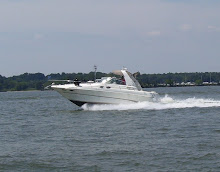The original Macerator (in the center) was kind of nasty looking and didn't work. Turns out 1 of the 2 duckbill valves were in backwards. But judging from the condition, I replaced the Macerator anyway.
Here's the new one. Much better!

Here's the new one. Much better!

Another view, but notice the "white" inlet hose. It is now heading upwards like it should have. The reason is, if you ever want to do any kind of work on the macerator, the original inlet hose came over from the bottom of the holding tank, stayed low, and then continued to the Macerator inlet.
What's wrong with that picture?
Come on... Sea Ray.
If anything is in the holding tank, which there usually is, Daaa, well it would be able to gravity free flow down to the Macerator. When you replace the duckbill valves inside, you have to take apart the hoses.
Get the picture?
Not a nice atmosphere to be working in.
And how would you clean, flush out, or otherwise winterize this thing in place either?
If anything is in the holding tank, which there usually is, Daaa, well it would be able to gravity free flow down to the Macerator. When you replace the duckbill valves inside, you have to take apart the hoses.
Get the picture?
Not a nice atmosphere to be working in.
And how would you clean, flush out, or otherwise winterize this thing in place either?

The bottom hose is the old, original way the inlet hose went.

My new way was to put a "Tee" in-line with a connection at the top for a 3/4" hose line to be able to flush the line and Macerator with antifreeze. The 3/4" hose is not shown yet in this picture. The new tee has to be as high as it can be and about as high as the highest fluid level inside the holding tank.
 Now it's a "Piece of Cake" to flush, clean and winterize!
Now it's a "Piece of Cake" to flush, clean and winterize!



No comments:
Post a Comment